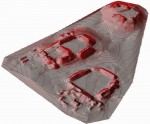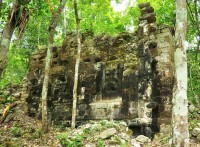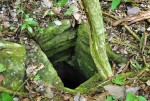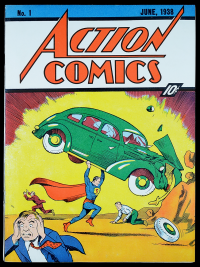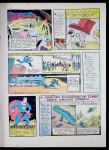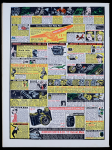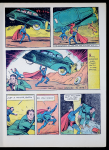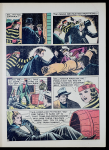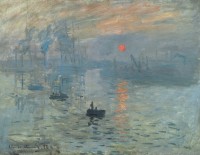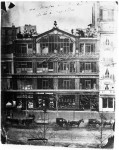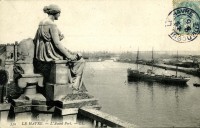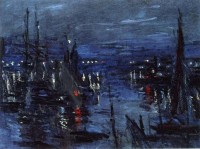The University of Copenhagen’s Natural History Museum has found a unique treasure in its stores: 55 barnacle specimens personally assembled and labeled by Charles Darwin. It all began, as so few things do but many should, with a 160-million-year-old Diplodocus skeleton.
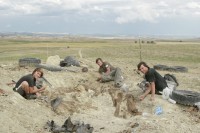 Misty is the skeleton of a Diplodocus longus discovered by the teenage sons of German paleontologist Raimond Albersdörfer during a 2009 excavation in Dana Quarry near the town of Ten Sleep, Wyoming. The young men wanted the chance to find something, so to keep them out of his hair their father shooed them away from his excavation site to go dig in an area where he thought they might unearth an innocuous fragment or two. By the end of the day they had unearthed a bone so big the two of them couldn’t carry it. Dad shifted his attention to his sons’ find and excavated almost the entire 56-foot-long skeleton of the dinosaur.
Misty is the skeleton of a Diplodocus longus discovered by the teenage sons of German paleontologist Raimond Albersdörfer during a 2009 excavation in Dana Quarry near the town of Ten Sleep, Wyoming. The young men wanted the chance to find something, so to keep them out of his hair their father shooed them away from his excavation site to go dig in an area where he thought they might unearth an innocuous fragment or two. By the end of the day they had unearthed a bone so big the two of them couldn’t carry it. Dad shifted his attention to his sons’ find and excavated almost the entire 56-foot-long skeleton of the dinosaur.
Because it was found on private land, there were no legal barriers to the fossil’s export and sale. After the bones were conserved in the US, they were sent to the Netherlands for assembly and then to London for auction. One of only six nearly intact Diplodocus fossils known, Misty was acquired on November 27th, 2013 for $651,100. Two weeks later, the anonymous buyer revealed itself to be the Natural History Museum of Denmark which was able to afford the pricey giant thanks to a donation from the Obel Family Foundation.
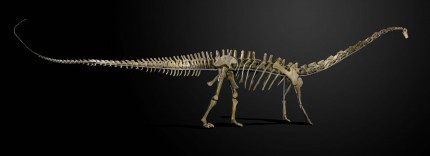
To properly welcome Misty, the museum planned its largest exhibition ever around her. The Precious (or The Cherished, should your Danish tend less towards the Tolkien) would showcase the museum’s most precious (hence the name) objects alongside their most recent acquisition, items that have been in storage for years unavailable to the public, the best of the best specimens from the fields of zoology, geology, botany, and paleontology: a Dodo skull, a stuffed Great Auk, a collection of snails assembled by Hans Christian Andersen during his travels in Denmark, a meteorite that fell in 1749. The focus of the exhibition is the full context of the objects, their natural and human history, how they came into existence coupled with how they came to the museum.
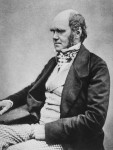 Exhibition Manager Hanne Strager was tasked with going through the museum’s collection of 14 million objects to select pieces for display. Strager is an evolutionary biologist and the author of By Confessing a Murder: Darwin and the Idea that Changed the World, a book on Darwin’s development of the theory of evolution and discoveries in the field since then. The title refers to a letter Darwin wrote to botanist Joseph Dalton Hooker in 1844 in which he wryly declared, “At last gleams of light have come, & I am almost convinced (quite contrary to opinion I started with) that species are not (it is like confessing a murder) immutable.”
Exhibition Manager Hanne Strager was tasked with going through the museum’s collection of 14 million objects to select pieces for display. Strager is an evolutionary biologist and the author of By Confessing a Murder: Darwin and the Idea that Changed the World, a book on Darwin’s development of the theory of evolution and discoveries in the field since then. The title refers to a letter Darwin wrote to botanist Joseph Dalton Hooker in 1844 in which he wryly declared, “At last gleams of light have come, & I am almost convinced (quite contrary to opinion I started with) that species are not (it is like confessing a murder) immutable.”
 As an accomplished Darwin scholar, Strager knew that Darwin had had a professional relationship with zoologist Japetus Steenstrup, the former director of the then Royal Natural History Museum (precursor to the modern-day Natural History Museum’s Zoological Museum), and that Steenstrup had loaned Darwin some specimens during the decade of intensive research that culminated in the publication of On the Origin of Species in 1859. Darwin wanted to compare species from different locations, to examine the differences and commonalities of related species. He had met Johan Georg Forchhammer, Professor of Mineralogy and Geology at the University of Copenhagen, in Birmingham, and he offered to send Darwin some barnacle fossils from the Copenhagen Geological Museum. He also connected Darwin to his friend Japetus Steenstrup, Professor of Zoology at the University of Copenhagen, who had his own collection of barnacles.
As an accomplished Darwin scholar, Strager knew that Darwin had had a professional relationship with zoologist Japetus Steenstrup, the former director of the then Royal Natural History Museum (precursor to the modern-day Natural History Museum’s Zoological Museum), and that Steenstrup had loaned Darwin some specimens during the decade of intensive research that culminated in the publication of On the Origin of Species in 1859. Darwin wanted to compare species from different locations, to examine the differences and commonalities of related species. He had met Johan Georg Forchhammer, Professor of Mineralogy and Geology at the University of Copenhagen, in Birmingham, and he offered to send Darwin some barnacle fossils from the Copenhagen Geological Museum. He also connected Darwin to his friend Japetus Steenstrup, Professor of Zoology at the University of Copenhagen, who had his own collection of barnacles.
 Steenstrup contributed some barnacle fossils from his collection to a parcel Forchhammer sent Darwin in November of 1849. When Darwin received them two months later — he had been so worried about his delayed barnacles that he put an ad in the paper offering a reward for their return — he wrote Steenstrup an abjectly delighted thank you note on January 25, 1850:
Steenstrup contributed some barnacle fossils from his collection to a parcel Forchhammer sent Darwin in November of 1849. When Darwin received them two months later — he had been so worried about his delayed barnacles that he put an ad in the paper offering a reward for their return — he wrote Steenstrup an abjectly delighted thank you note on January 25, 1850:
Dear Sir
I am quite delighted in at last being able to tell you that your Box with the fossil cirripedes has arrived quite safely this morning.— It is a great load off my mind.— Not one specimen is injured, except, perhaps, some of the valves of your Anat(?) cretæ.— It is a noble collection, & I feel most grateful to you for having entrusted them to me.— I have now a great many collections in this house, so that I have good means of comparison.— Most of your species, as far as a hasty first glance tells, are different from the British. Your P. medius. is the same as P. sulcatus of Sowerby; & instead of being a Pollicipes, it is a Scalpellum, though these genera differ much too little.— The P. elegans I have (unnamed) from our Chalk.— I will do my best in comparing all the specimens which I have now together; but I am not hopeful of producing good results: I much dislike giving specific names to each separate valve, & thereby almost certainly making three or four nominal species for each true species.—
I am extremely pleased to see the Alepas. The cause of the great delay was in Prof. Forchhammer having sent the box within another to a dealer in minerals, who uncourteously did not take the trouble to inform me. Please to tell Prof. Forchammer that owing to his note I have got the Box, & pray give him, & accept yourself my most cordial thanks.— I will take great care of your specimens.— I hope now that this Box has arrived safely, that you will add to your already great kindness, & send me the northern species alluded to in your former letter.—
I will hereafter write again to you.—
Pray believe me | my dear Sir | Yours most gratefully | C. Darwin
(NB: The Darwin Correspondence Project website, a massive database that seeks to digitize all letters written by and to Charles Darwin, is down as of right now, which is why I linked to cached versions of the letters in this entry. I hope it will be up and running again soon because it’s awesome.
EDIT: And it’s back! I’ve replaced the cached links with live ones. Do yourself a favor and have a browse around the site now. It lends such rich insight into Darwin and his work. They’ve done a great public service by making his correspondence available at the click of a mouse.)
It was Steenstrup’s barnacle fossils, which Darwin had returned as promised, that Hanne Strager was hoping to find for the exhibition. The barnacle study was an important part of Darwin’s research, so if they could be found they would have a great story to tell. Strager was reading through Steenstrup’s papers in the museum archives looking for clues that might identify the specific fossils Darwin examined when she found something even better: an 1854 letter from Darwin in which he mentioned a list of 77 species of barnacles he had sent to Steenstrup as a thank you gift for his help.
The list itself was not in the letter. More searching through Steenstrup’s papers ensued and lo and behold, the list was found. It was hard to read, however, and took some time to decipher. Once that was done, Strager had to dig through storage looking for the 77 specimens. They weren’t kept together because in 1854 there was no reason for it. On the Origin of Species was five years away. The barnacles were seen as specimens like any other, not the curated collection of a great pioneering scientist. They were spread throughout the museum collection according to their species.
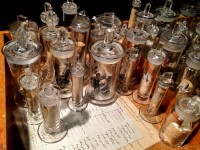 Strager finally located 55 of Darwin’s barnacles. Most of the missing 22 are samples from a single genus. They were probably loaned to another institution or scientist who was researching that specific genus at some point over the past 160 years and never returned. Somebody somewhere may have 22 barnacle specimens collected by Charles Darwin and have no idea of their illustrious history.
Strager finally located 55 of Darwin’s barnacles. Most of the missing 22 are samples from a single genus. They were probably loaned to another institution or scientist who was researching that specific genus at some point over the past 160 years and never returned. Somebody somewhere may have 22 barnacle specimens collected by Charles Darwin and have no idea of their illustrious history.
Not that anyone’s complaining. The collection of 55 specimens, with original labels and an inventory list in Darwin’s hand, is an exceptional find. The museum believes it’s the most significant Darwin collection outside of London’s Natural History Museum.
“To be able to display a gift from one of the world’s greatest scientists is unique for a museum,” Stager said.
“Here we have a personal connection to the man responsible for what is probably biology’s greatest ever scientific breakthrough: the Theory of Evolution.”
Darwin’s barnacles will go on display with Misty and many other treasures starting October 1st.
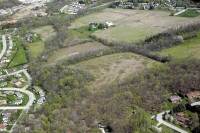 The only Revolutionary War POW camp to survive in undeveloped condition has been saved for posterity thanks to donations from the public. When I first wrote about Camp Security last April, the 47-acre plot in Springettsbury Township, Pennsylvania, between the city of York and the Susquehanna River, was in danger of being sold. More than half a million dollars of a bridge loan secured by non-profit The Conservation Fund for its purchase was still outstanding, and if the money couldn’t be raised by August, the Fund might have to sell the land or face disastrous budgetary consequences.
The only Revolutionary War POW camp to survive in undeveloped condition has been saved for posterity thanks to donations from the public. When I first wrote about Camp Security last April, the 47-acre plot in Springettsbury Township, Pennsylvania, between the city of York and the Susquehanna River, was in danger of being sold. More than half a million dollars of a bridge loan secured by non-profit The Conservation Fund for its purchase was still outstanding, and if the money couldn’t be raised by August, the Fund might have to sell the land or face disastrous budgetary consequences. 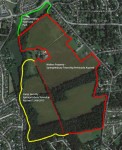 It joins an adjacent 115-acre parcel and a small park that already belong to the township to form a large public open space. Hunting and digging are prohibited, but people can walk it or picnic on it or throw frisbees to their hearts’ content. The overall plans for the property include environmental preservation, historic preservation and archaeological exploration.
It joins an adjacent 115-acre parcel and a small park that already belong to the township to form a large public open space. Hunting and digging are prohibited, but people can walk it or picnic on it or throw frisbees to their hearts’ content. The overall plans for the property include environmental preservation, historic preservation and archaeological exploration. 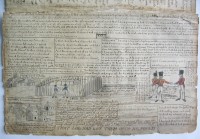 Most of this first group of prisoners had been captured after the surrender of General John Burgoyne at Saratoga, New York, in 1777. They were used to living in America, despite have experienced considerable hardships during nearly four years of imprisonment, and at Camp Security they were given many freedoms. They could work — gets jobs or run their own cottage industries — travel freely within 10 miles of the camp, and even live with their families at Camp Indulgence. It was the newer prisoners, particularly those captured after Cornwallis’ defeat at Yorktown in October of 1781, who were confined to Camp Security and closely guarded. Once the archaeological team identifies the location of one of the camps, they can figure out where the other one is.
Most of this first group of prisoners had been captured after the surrender of General John Burgoyne at Saratoga, New York, in 1777. They were used to living in America, despite have experienced considerable hardships during nearly four years of imprisonment, and at Camp Security they were given many freedoms. They could work — gets jobs or run their own cottage industries — travel freely within 10 miles of the camp, and even live with their families at Camp Indulgence. It was the newer prisoners, particularly those captured after Cornwallis’ defeat at Yorktown in October of 1781, who were confined to Camp Security and closely guarded. Once the archaeological team identifies the location of one of the camps, they can figure out where the other one is. 